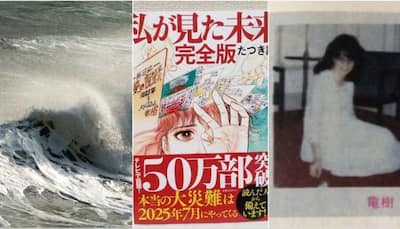A prophecy from Japanese manga creator and claimed clairvoyant Ryo Tatsuki has instigated global fear and a dramatic drop in travel bookings to Japan, mainly from East Asia. The artist’s prophecy of a disastrous tsunami in July 2025, supposedly derived from repeated dreams, went viral, resulting in a 50% fall in tourist bookings in some areas, according to The Japan Daily.
The dire prediction, fueled by social media and online influencers, has hit hardest at travel from such nations as South Korea and China, leading airlines and tour operators to modify flight timetables and packages. The tourism industry of Japan, already dealing with post-pandemic recovery efforts, is now coping with the consequences of a spate of doomsday rumors.
The dire prediction, fueled by social media and online influencers, has hit hardest at travel from such nations as South Korea and China, leading airlines and tour operators to modify flight timetables and packages. The tourism industry of Japan, already dealing with post-pandemic recovery efforts, is now coping with the consequences of a spate of doomsday rumors.
Ryo Tatsuki became cult famous through her illustrated novel The Future I Saw, originally published in 1999. The novel, which combines manga narrative with diary-like accounts of her prophetic nightmares, developed cult status following a number of her earlier predictions seeming to correspond with actual events.
Tatsuki’s forecasts are presented in a minimal, matter-of-fact style without dramatic interpretation, which many followers believe added credibility. Her 2021 update included a forewarning of a devastating undersea rupture between Japan and the Philippines in July 2025, expected to unleash a tsunami and possible volcanic activity. The apocalyptic nature of the prediction has earned her comparisons to the late mystic Baba Vanga.
But seismologists and disaster specialists have refuted the prophecy strongly. University of Tokyo disaster prevention expert Sekiya Naoya said, “There is no way, with today’s science, to predict exactly when and where an earthquake will occur.” He cautioned against believing the assertion, saying any shaking during the forecasted time period would be coincidental as reported by news agency India Today.
Miyagi Governor Yoshihiro Murai also made a public statement on April 23, calling on people to reject “groundless and destructive” rumors, which he claimed were harming local economies and shattering the reputation of Japan’s travel industry.
To counter the increasing hysteria, Japanese authorities and tourism organisations are stepping in to combat the dissemination of misinformation. Emergency communication efforts have been launched, and regional administrations are actively communicating with members of the public with a view to reestablishing confidence in the official weather and geological predictions.
Despite the viral traction of Tatsuki’s prediction, scientific consensus remains firm: natural disasters cannot be predicted with specific dates, and panic rooted in pseudoscience serves only to harm public confidence and economic stability.
As Japan braces for the peak of its summer travel season, authorities continue to monitor the situation while advocating for calm and critical thinking amid rising online speculation.
Stay informed on all the , real-time updates, and follow all the important headlines in and on Zee News.








